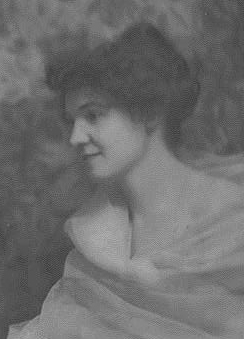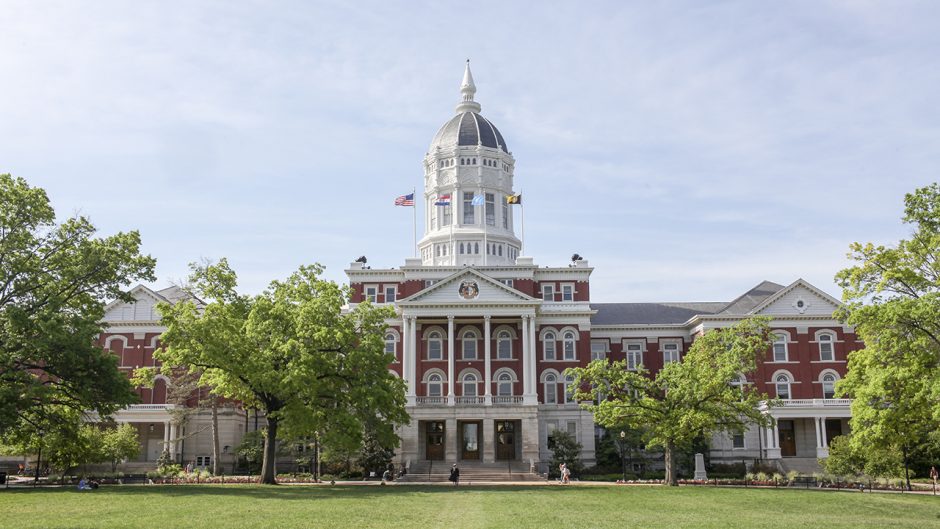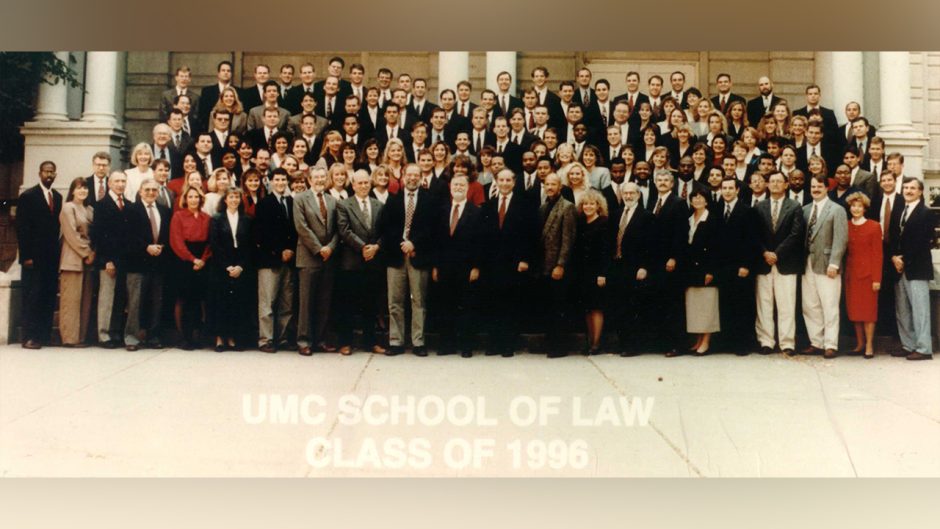
A century ago, Ada Belle Cowden was Mizzou nursing student and worked at at MU’s Parker Memorial Hospital, now Parker Hall. She completed her coursework and prepared for a 1916 commencement ceremony but was denied her diploma because she had gotten married. This spring, 100 years later, her great-granddaugther graduates from Mizzou.
These days, youngsters pack smart phones full of tunes that could well include performers or even whole genres their parents have never heard of. Ada Belle Cowden Matteson — though she was born in 1893 in Woodlandville, Missouri, before radio, television, rural electrification and land lines — would have understood the allure of the today’s playlist. She graduated with a nursing degree from MU 100 years ago — amid some controversy — and her family loves to tell the tale that appears below. This spring, her great-granddaughter will earn a degree from Mizzou as the latest among the four generations of her extended family to come through the university. But historians of Missouri culture will remember Ada Belle for the traditional songs she had noted down by age 16 that became part of the Show-Me State’s cultural history within the pages of “Ballads and Songs Collected by the Missouri Folk-Lore Society.”
Ada Belle’s hometown of Woodlandville, 11 miles northwest of Columbia as the crow flies, was a thriving community in her day. The Cowden family likely had long been part of what made it go. The family cemetery in Woodlandville has a headstone dating to 1845. “Woodlandville is a very old settlement in prime farmland, with solid families mostly emigrated from Kentucky and Virginia,” says Howard Marshall, BA ’70, professor emeritus of architectural history and an expert in the folklore of the mid-Missouri region known as Little Dixie. “It may have had a post office back then, and a general store and blacksmith shop, and an important grist mill. Such modest rural settlements, or hamlets, worked very well and usually did not aspire to greatness in terms of development.”
On the trail of story-song
Growing up in Woodlandville, Mo., Ada Belle Matteson (née Cowden) wrote down lyrics to traditional songs that are now part of Missouri’s cultural history.[/caption]Meanwhile at MU, while Ada Belle was yet a toddler, the university hired folklorist Henry Marvin Belden, who recently had earned a doctorate from Johns Hopkins University. He arrived in 1895 as an assistant professor of English and a few years later joined a new club that in 1906 became the Missouri Folklore Society, whose mission included collecting folk songs. These works, passed down the generations as repositories of stories, values and other sorts of information, were a new subject for academics at the turn of the 20th century, wrote Lyn Wolz, BA ’73, MA ’75, in her master’s thesis for a degree in library science.
In Missouri, organized collecting of folk songs began with Belden’s awakening to Missouri’s music. He started by collecting songs from his students, then picked up speed when he asked students to collect from friends, relatives, neighbors and acquaintances. “This fever of activity continued until approximately 1917, when disruption caused by the European war made continuance of the effort difficult,” Wolz wrote. By then, more than 100 people, most of them MU students or alumni, had contributed folksongs they knew or collected from others. Belden sorted, annotated and compiled songs in the landmark work, Ballads and Songs, which includes 610 text variants of 284 songs, as well as 70 tunes. Ada Belle’s dozen appear in the compilation, which Alan Lomax, longtime director of the Library of Congress Archive of American Folk Song, called one of the most important books of its kind.
But Ada Belle probably didn’t think of her ballads as folk songs in the way academics do, says Lisa Higgins, PhD ’08, who directs the Missouri Folk Arts Program at MU. “This was the music that she grew up with. This is what people played on Friday night. She liked it enough to write down the words so she could remember them.” Ada Belle’s personal reference book of lyrics was her ballad book, likely pronounced “ballot book” in the vernacular, Higgins says.
Love and death

Ada Belle and Erdley Stone Matteson had six children. More than a dozen of their descendants became Tigers.
Making ballad books is part of a long tradition in England and Scotland as early as the 17th century, Marshall says. “The practice continued, mostly among women, in the U.S. They could be in the form of a very old document of parchment leaves painstakingly written on and sewn together, or could be something as simple as a photo album or spiral notebook. Ballads, of course, tell stories, and through the centuries they have been a prime channel for a culture’s oral history, sending it down to the future through song. Lots of the old British ballads morphed into “Missouri” or “American” ballads with simple changes of names and places.” For example, the precursor to the Carter Family’s 1920s rendition of “Black Jack David” is “The Gypsy Laddie,” with origins in the British Isles in the 1600s. Centuries later, the protagonist still leaves her husband, baby and comfy feather bed to run off with a gypsy.
The songs had been so much a part of life and so consistent for so long that Ada Belle could have compared notes on them with ancestors dating back to the time when the English and Scottish parliaments voted to establish the Kingdom of Great Britain. From Ada Belle’s ballad book, Belden plucked more than one old song featuring jilted lovers and desperate deeds. In one, the protagonist took her own life with a silver dagger rather than go on without her sweetheart.
Modern woman
Ada Belle, along with her family and friends, may have been intimate with a centuries-old musical tradition, but she was also a modern college girl of her age. From 1911 to 1913, she attended Christian College (now Columbia College) where she met faculty member Lucy Laws, another folklore scholar, who learned about Ada Belle’s ballad book and passed it along to Belden.
In 1913, Ada Belle entered nursing school at MU, and the record holds no mention of mishaps until she neared graduation in 1916. At some point, she became engaged to Erdley Stone Matteson of Grant City, an agriculture major. Erdley Stone finished his livestock-related coursework a few months early and went to a temporary job in Kansas City to earn money for their start in life. The couple had much to look forward to, including a romantic plan wherein Erdley Stone would return to marry Ada Belle on their Commencement day in June.
The wedding would be performed in secret, though, with just her sister and one other witness. For, as part of Ada Belle’s practicum, she needed to work in the hospital for a few weeks past Commencement on a special case she’d been assigned. Unfortunately, in those days, marriage disqualified women from such positions.
But the romantic plan went awry when, somehow, notice of their nuptials appeared prematurely in the newspaper. So, despite having performed all the class work and the usual practicum, Ada Belle did not receive a diploma, and she was dismissed from her hospital work immediately. She and Erdley Stone left the next day for Edina, Missouri, where he managed a farm, and they started a family. In time, Erdley became a livestock specialist for University of Missouri Extension and began organizing Show-Me State cattle ranchers to pool their small herds when going to market, thereby accumulating sufficient stock to attract better buyers and prices. Ada Belle, among other things, bore six children into the world.
Righting a Wrong
No direct evidence of any disappointment regarding the end of Ada Belle’s college education appears until 12 years later. In 1928, a Shannon Crews, after touring the then-new hospital, visited Dean of Medicine and Hospital Director Guy Noyes. Crews mentioned the injustice done to Ada Belle, and that same day he wrote a conciliatory letter: “… I was very much surprised to learn of [the diploma incident]. … If you would like to have your diploma it would please me very much to take such steps as are necessary to see that one is made up and sent to you. You may have it as Ada Belle Cowden or as Ada Belle Matteson, as you choose. Please let me know your wishes promptly that I may take the matter up with Miss Flowers and the Secretary of the University. … ”
“If you would like to have your diploma it would please me very much to take such steps as are necessary to see that one is made up and sent to you.”
Presumably, Ada Belle finally received her diploma, but she did not have long to enjoy it. Alas, she died of infection two years later, at age 37, possibly a few days after delivering a child who did not survive. The infection known as puerperal septicemia, aka childbed fever, remains a major killer of postpartum mothers wherever there is a scarcity of antibiotics, which can tame the bacterial infection.
Almost two decades later, in 1947, the family home burned, and little survived, according to Ada Belle’s daughter-in-law, A. M. Matteson of La Plata, Missouri. The ballad book and diploma are lost. But by the time of the fire Ada Belle and Erdley Stone had launched a tribe that valued education as much as they did. More than a dozen of their children, grandchildren and great-grandchildren have attended or graduated from MU. This year, a century after the diploma incident and almost as if to honor Ada Belle’s story, great-granddaughter Christina Scudder will graduate from Mizzou with a doctorate in veterinary medicine.




